research aeroplane
Type of resources
Topics
Keywords
Contact for the resource
Provided by
Years
-

This polygon spatial dataset describes the benthic habitats likely to occur in marine environments around Gunn Point Peninsula and informs the desktop assessment of the marine biodiversity values for the region. The benthic habitats are inferred from existing information but in most cases require further data collection to validate and refine. Habitat modelling forms the basis of benthic community value assessment for Shoal Bay (Galaiduk et al. 2019). The accompanying report Marine and Coastal Biodiversity Assessment of the Gunn Point Area (2020) forms part of the Mapping the Future Project - Gunn Point. This project has identified land capability, water availability and biodiversity values to support land planning and inform development potential over the Gunn Point area. Reports and maps can be viewed from the webpage: denr.nt.gov.au/land-resource-management/development-opportunities - Development Potential of the Gunn Point Area (2020) - Biodiversity Assessment of the Gunn Point Area (2020) - Groundwater Resources of the Gunn Point Area (2020) - Marine and Coastal Biodiversity Assessment of the Gunn Point Area (2020) - Soil and Land Resources of the Gunn Point Area (2020) - Soil and Land Suitability Assessment for Irrigated Agriculture in the Gunn Point Area (2017) - Vegetation Communities of the Gunn Point Area (2020)
-
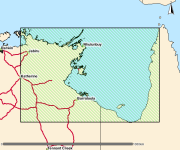
This is a collection of polygons outlining signficant seagrass meadows around Arnhem Land, Kakadu and Gulf of Carpentaria coastal waters for the Northern Australia Marine Biodiversity Survey (NAMBS) project between 2003 and 2005. Data was collected from imagery and ground truthed by observers from helicopter and insitu sample grabs.
-
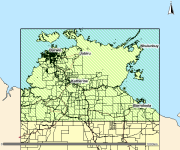
This spatial polygon dataset is derived from the 2001 mapping of mud crab (Scylla serrata) habitats along the NT and Queensland coastal wetlands. The polygons were derived from Landsat imagery and verified with field work and is suitable for use at scale 1:100,000. The information can be used in many ways to assist the management of these habitats. It provides a suitable baseline dataset for monitoring broad scale changes in area and composition of coastal wetland communities. Additionally, it provides information required by managers for choosing representative habitats for protection.
-
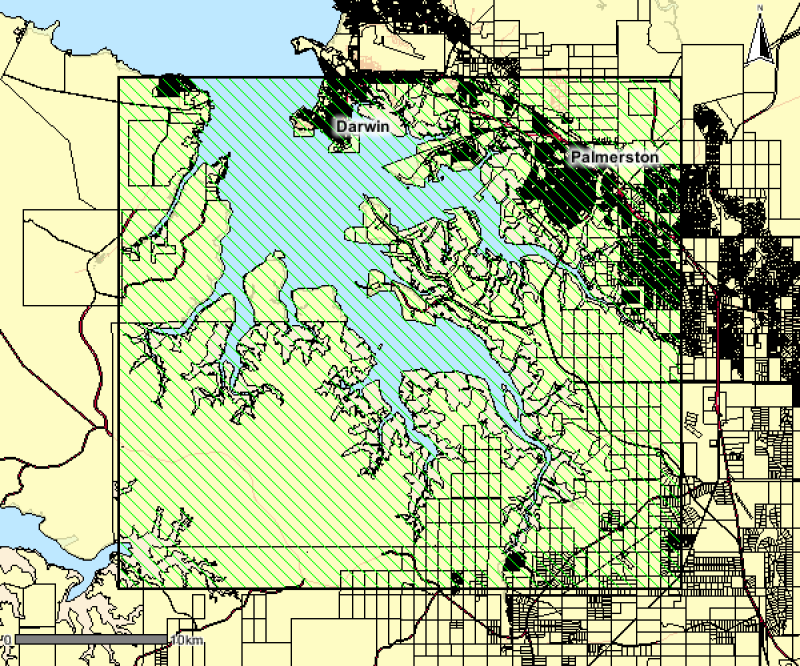
This polygon spatial dataset describes the mangrove communities for Darwin Harbour and its environs and was surveyed at a mapping scale of 1:25 000. The associated report notes an area of approximately 20,400 hectares of mangroves in Darwin Harbour and describes ten main mangrove associations or communities. The data provides a basis for identifying the extent and distribution of mangrove communities for Darwin Harbour and its environs.
-
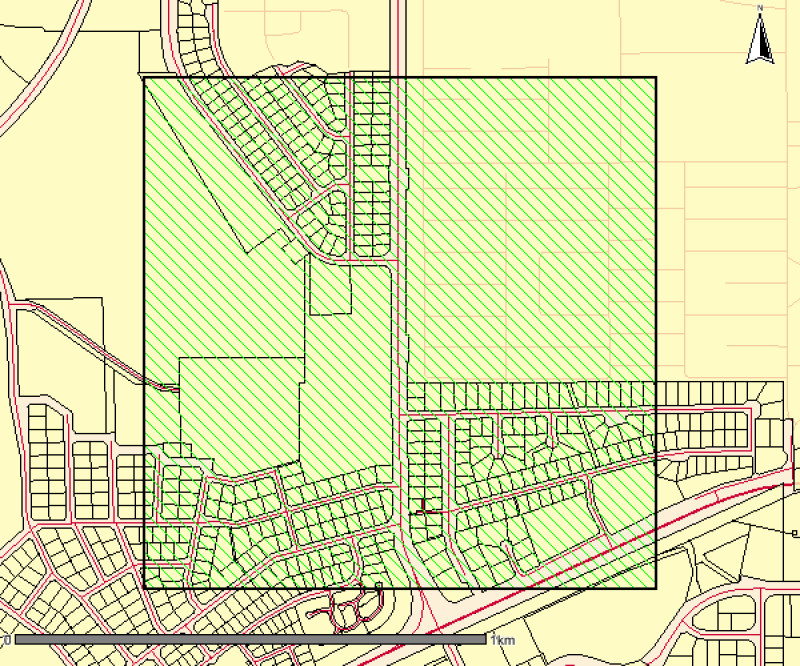
This is a high resolution survey (1:5,000 scale dataset) describing mapped vegetation communities for the Ludmilla Creek catchment area (within the City of Darwin, Northern Territory). (Vegetation Unit - A reasonably homogeneous part of the land surface, distinct from surrounding terrain with constant properties in landform and vegetation) This vegetation survey was undertaken in 1996. This dataset represents the vegetation on the ground at the time of the survey and reflects the data and methods used to create the mapped polygons. The dataset has been revised in 2015 to include community descriptions but has not been updated to reflect the vegetation on the ground. The Darwin Remnant Vegetation Survey is considered a more up-to-date representation of vegetation for this area.
-
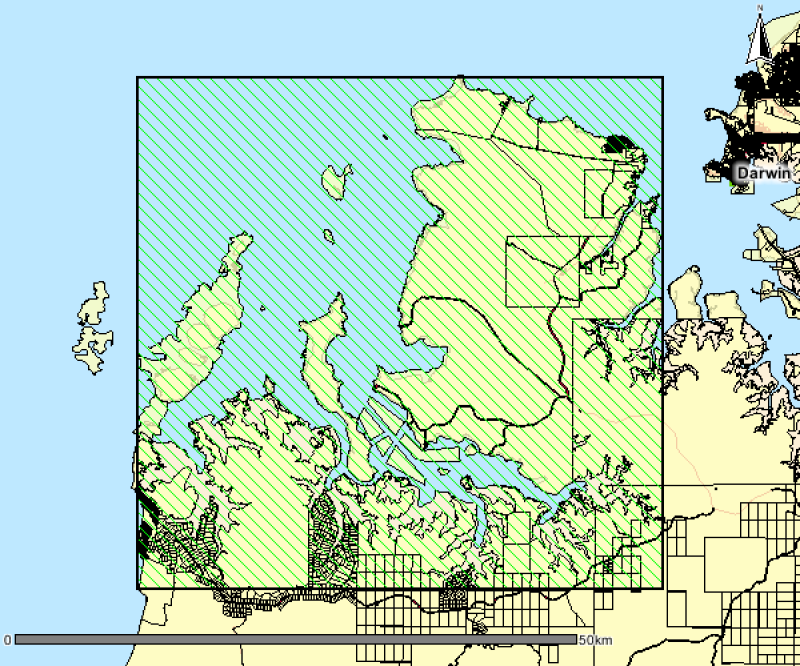
This polygon spatial dataset describes the mangrove communities for Bynoe Harbour and its environs. The original field survey was undertaken in 1998 at a mapping scale of 1:25,000. The associated report notes an area of approximately 24,000 hectares of mangroves in Bynoe Harbour and describes ten main mangrove associations or communities. The data provides a basis for identifying the extent and distribution of mangrove communities for Bynoe Harbour and its environs. Mangrove mapping was updated over this area in a 2016 survey. See metadata record for Mangrove Community Mapping - Charles Point to Gunn Point. www.ntlis.nt.gov.au/metadata/export_data?type=html&metadata_id=87F656131848A609E050CD9B214417E1
-
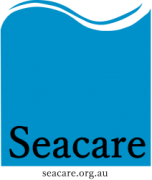
An aerial survey was conducted for giant kelp (Macrocystis pyrifera) on the east coast of Tasmania from Eddystone Point to Southeast Cape. This survey represents part of a series of similar surveys, with historic aerial surveys having been conducted in 1986 and 1999. The survey was conducted via light aircraft. Areas of visable Macrocystis pyrifera beds were marked on topographical land tenure maps using landmarks as references, and complimentary photo footage was collected.
-
Seagrass meadows within the Broadwater were mapped using high-resolution 2005 orthorectified color aerial photography obtained from the Gold Coast City Council at a scale of 1:10,000 and pixel size 0.15 m. Using desktop GIS mapping (MapInfo Professional 8.0), polygons were drawn over all potential seagrass meadows at a scale of 1:5000. Spatial accuracy was estimated to be approximately ± 1 m on well-defined boundaries (e.g. dense seagrass meadows) and ± 2 m along poorly defined boundaries (e.g. sparse seagrass meadows).
-

In 2014, UniDive (The University of Queensland Underwater Club) conducted an ecological assessment of the Point Lookout Dive sites for comparison with similar surveys conducted in 2001 - the PLEA project. Involvement in the project was voluntary. Members of UniDive who were marine experts conducted training for other club members who had no, or limited, experience in identifying marine organisms and mapping habitats. Since the 2001 detailed baseline study, no similar seasonal survey has been conducted. The 2014 data is particularly important given that numerous changes have taken place in relation to the management of, and potential impacts on, these reef sites. In 2009, Moreton Bay Marine Park was re-zoned, and Flat Rock was converted to a marine national park zone (Green zone) with no fishing or anchoring. In 2012, four permanent moorings were installed at Flat Rock. Additionally, the entire area was exposed to the potential effects of the 2011 and 2013 Queensland floods, including flood plumes which carried large quantities of sediment into Moreton Bay and surrounding waters. The population of South East Queensland has increased from 2.49 million in 2001 to 3.18 million in 2011 (BITRE, 2013). This rapidly expanding coastal population has increased the frequency and intensity of both commercial and recreational activities around Point Lookout dive sites (EPA 2008). Habitats were mapped using a combination of towed GPS photo transects, aerial photography and expert knowledge. This data provides georeferenced information regarding the major features of each of the Point Lookout Dive Sites.
-

Surveying habitats critical to the survival of grey nurse sharks in South-East Queensland has mapped critical habitats, gathered species inventories and developed protocols for ecological monitoring of critical habitats in southern Queensland. This information has assisted stakeholders with habitat definition and effective management. In 2002 members of UniDive applied successfully for World Wide Fund for Nature, Threatened Species Network funds to map the critical Grey Nurse Shark Habitats in south east Queensland. UniDive members used the funding to survey, from the boats of local dive operators, Wolf Rock at Double Island Point, Gotham, Cherub's Cave, Henderson's Rock and China Wall at North Moreton and Flat Rock at Point Look Out during 2002 and 2003. These sites are situated along the south east Queensland coast and are known to be key Grey Nurse Shark aggregation sites. During the project UniDive members were trained in mapping and survey techniques that include identification of fish, invertebrates and substrate types. Training was conducted by experts from the University of Queensland (Centre of Marine Studies, Biophysical Remote Sensing) and the Queensland Parks and Wildlife Service who are also UniDive members. The monitoring methods (see methods) are based upon results of the UniDive Coastcare project from 2002, the international established Reef Check program and research conducted by Biophysical Remote Sensing and the Centre of Marine Studies. This record describes the digitised habitat features for Wolf Rock. View the original metadata record at https://doi.pangaea.de/10.1594/PANGAEA.864211 for the full data collection.
 IMAS Metadata Catalogue
IMAS Metadata Catalogue